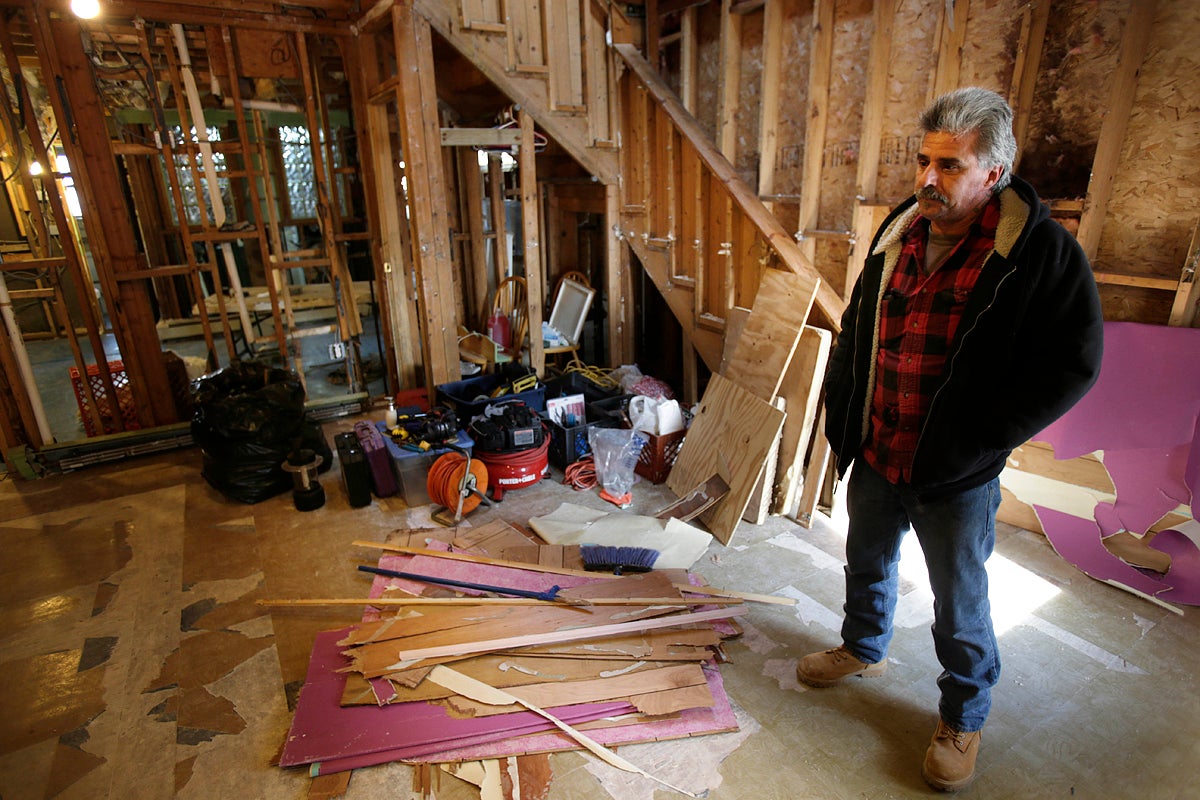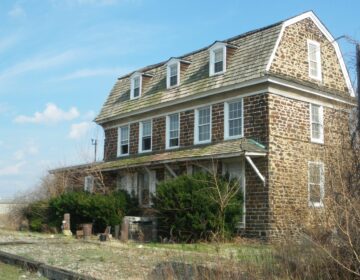The ins and outs of New Jersey’s grant programs for Sandy aid

(AP File Photo/Seth Wenig)
After Superstorm Sandy, many agencies and organizations stepped up to provide grants and loans to those whose homes were damaged. The money came from homeowner insurance policies, the Small Business Administration, and the Federal Emergency Management Agency, among others. But homeowners have long awaited the release of disaster recovery grants that the federal government allocated to New Jersey to supplement these other programs.
Thus far, the state has received $1.8 billion in Community Development Block Grants, which are funded through the U.S. Department of Housing and Urban Development and administered at the state level by the New Jersey Department of Community Affairs. Beginning May 24, $780 million became available for homeowners through two grant programs. Roughly 7,000 people applied in the first week.
“What we’re doing is trying to help [homeowners] fill the gaps,” said Richard Constable, the commissioner of the NJDCA. “Many of these homeowners had insurance and received proceeds form their insurance and many received FEMA aid, and many applied for small business loans. So what we’re talking about is helping primary homeowners who still have a need for assistance.”
Here’s the skinny on what’s available, how to apply, and when to expect the funds.
The programs:
Homeowner Reconstruction, Rehabilitation, Elevation and Mitigation (RREM):
A $600 million program which will provide eligible homeowners with grants up to $150,000 to aid in the reconstruction, rehabilitation, elevation, or mitigation of their damaged primary homes.
The Homeowner Resettlement Program:
A $180 million program that provides grants of $10,000 to homeowners to encourage them to resettle in their existing primary homes or their home county.
What follows is a question-and-answer session with Commissioner Constable, which has been lightly edited and ordered for length and clarity.
Will these programs grow or change?
This is the first allocation of funding. The fed government provided the impacted states with some $60 billion. Of that, $16 billion is for Community Development Block Grant program. There’s going to be several rounds of funding. In this initial round, the state of New Jersey received $1.8 billion, and of that, we’re putting $780 million into these two programs. When we get a second round of funding, we’re going to pump more money into these two programs.
Starting with the homeowner resettlement grants, does the award amount vary or is it a flat rate?
It’s a flat $10,000. Basically if you have more than $8,000, you’re eligible for of this grant. The concern here is that folks will just up and walk away from their properties. We saw that in the Gulf Coast states post-Katrina, that a lot of New Orleans residents just decided to leave the state and we don’t want to see that happen.
Additionally, last year the subsidies for [flood] insurance rates went away because of a federal law, so we’re going to see a lot of New Jerseyans who are in flood plains have rising insurance costs and we believe that this $10,000 grant can help offset that cost. And in exchange for the $10,000 resettlement grants, they just have to agreet to remain in their home or home county for three years post award.
That’s dispersed as a check or deposit? In other words, homeowners don’t need to apply for reimbursements?
It’s a one-time check of $10,000. And because of HUD rules the money has to be used for non-construction related costs. For example, insurance costs. Or there are many homeowners who are living in a rental resource or with friend or loved one’s and they can use $10,000 to offset those costs.
Do homeowners need to submit receipts?
They have to, in writing, say they’re not going to use it for construction costs.
Moving on the RREM program, who’s eligible?
Any primary homeowner with significant damage during Sandy can use the money to elevate or reconstruct their homes. You have to be in one of the nine designated counties by HUD with the most damage – Atlantic, Bergen, Cape May, Essex, Hudson, Middlesex, Monmouth, Ocean, and Union. If you’re in one of those counties, had significant damage, and it’s your primary residence, then you’re eligible to receive up to $150,000.
When you say up to $150,000, how do you determine the amount people actually get?
Once a homeowner is deemed eligible to receive funds, we’ll send out someone that’s called an estimator, who’ll do a ‘scope of work’ [analysis] on their home. We’ll see the damage and what needs to fixed or repaired. We’ll notate if the home has to be elevated and all of repairs, electric, plumbing, that go along with that. Ultimately they’ll be a work up and it’ll say, for example, there’s going to $250,000 of work to be done.
That would be the combination of repairing and elevating?
Exactly. So at that point, the homeowner is eligible to receive up to $150,000. Now, the $150,000 can’t be duplicative – it can’t be a windfall to the homeowner. If you have $150,000 from your insurance company, monies from Small Business Association, monies from FEMA, and all that you need to complete the repairs is $50,000 from the RREM program, then you’ll only get $50,000. This is to fill the gaps. We’re not going to duplicate benefits.
Then the second thing that happens is [the work] has to be contracted out to a general contractor. Once the general contractor is selected, the contractor and the homeowner have to meet. The monies have to be escrowed in an account. As the work gets done, then the contractor is reimbursed. We have to ensure that the contractor will get paid for his or her work, so we’ll escrow all of the money. We’ll escrow the RREM award, and also any insurance, small business loans, and FEMA grants, into an account. Then we’ll do disbursement in a reimbursement fashion to the contractor until all the work is done.
– more –
WHYY is your source for fact-based, in-depth journalism and information. As a nonprofit organization, we rely on financial support from readers like you. Please give today.




